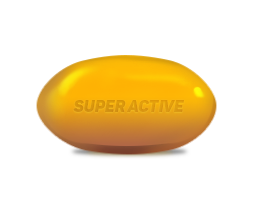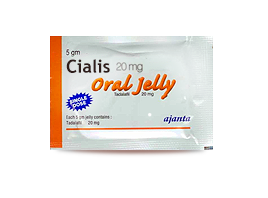Hytrin refers to the group of pharmaceutical products intended to cure the sexual/urinary maladies and sex hormone medical preparations. Its composition includes Terazozin - a medical mean for the normalization of the prostate gland in benign hypertrophy.

Thiol derivative, a competitive hypoxanthine antagonist, has an immunosuppressive and cytostatic effect. It is used for prevention of rejection reaction in kidney transplantation, treatment of rheumatoid arthritis, chronic active hepatitis, SLE, dermatomyositis, periarteritis nodosa, acquired hemolytic anemia, gangrenous pyoderma, psoriasis, Crohn's disease, ulcerative colitis and myopathy.
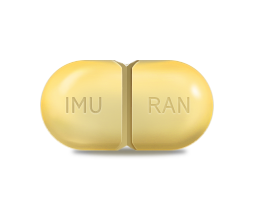
An antifungal drug for oral and topical use in fungal diseases of the skin and nails. At low concentrations, it has fungicidal activity against dermatophytes.

An antidepressant used in cases of deep depression, panic disorders, social anxiety disorders, anxiety disorders. The mechanism of its action is based on the ability to selectively block the reuptake of serotonin by the presynaptic membrane of the neurons of the brain. Consequently, its serotonergic effect in the central nervous system that is responsible for the development of antidepressant effect, increases, which determines the effectiveness in the treatment of panic and social anxiety disorder.

Lipitor refers to inhibitors of hydroxymethylglutaryl coenzyme A-reductase. It is used to lower the level of LDL cholesterol (bad cholesterol) in the blood, total cholesterol, triglycerides (another kind of fat) and apolipoprotein B (protein required for cholesterol production). Lipitor is also used to increase the blood cholesterol level of HDL cholesterol (good cholesterol). It is necessary to reduce the risk of hardening of the arteries, which can lead to heart attacks, strokes and peripheral vascular diseases.

An antifungal agent from the group of imidazole derivatives for external and local applications reduces the synthesis of ergosterol, which is a part of the cell membrane of the microbial wall and leads to a change in its structure and properties. In fungicidal concentrations, it interacts with mitochondrial and peroxidase enzymes, leading to an increase in the concentration of hydrogen peroxide to toxic levels, which also contributes to the destruction of fungal cells. The pills are active against pathogenic dermatophytes, pathogens of multi-colored lichen, erythrasma, gram-positive and gram-negative bacteria.

A thiazide diuretic of the average intensity, applied in arterial hypertension, edema syndrome of different origin, gestosis and diabetes insipidus. Reduces reabsorption of Na+ at the level of the Henle loop cortical segment, without affecting its segment lying in the medulla of the kidney that detects a weaker diuretic effect compared with furosemide.

A peripheral vasodilator, blocks postsynaptic alpha1-adrenergic receptors and prevents the vasoconstrictive influence of catecholamines. It reduces pressure in the pulmonary veins and the right atrium significantly, it also reduces pulmonary vascular resistance moderately. The drug therapeutic indications include: arterial hypertension; CHF (in combination therapy), Raynaud's syndrome and disease, pheochromocytoma, peripheral vascular spasm on the background of poisoning with ergot alkaloids. Prostatic hyperplasia

stimulant of the intestinal peristalsis. Motillium is assigned in cases of: distention, overeating, vomiting, heartburn, flatulence, a feeling of overflow of the stomach.
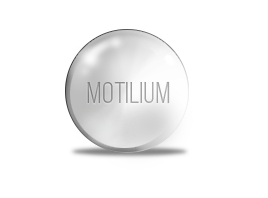
A blocker of H1-histamine receptors of the first generation, derived from ethanolamine; eliminates the effects of histamine, mediated through this type of receptors. Promotes the local anaesthesia (when intaken, there is a short numbing of the mucous membranes in the mouth) - only in high doses, it blocks m-cholinergic receptors in the central nervous system, has sedative, hypnotic, antiemetic and antiparkinsonian effects. The therapeutic indications include: allergic conjunctivitis, allergic rhinitis, chronic urticaria, pruritic dermatoses, dermatographism, serum sickness.
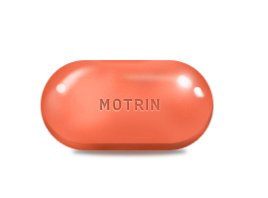
An antituberculosis drug which acts bacteriostatically; it enters the actively growing cells of mycobacteria by inhibiting RNA synthesis, interferes with cellular metabolism, causing cessation of reproduction and death of bacteria. Active only in relation to the intensively dividing cells. Inhibits the growth and reproduction of tuberculosis mycobacterium resistant to streptomycin, isoniazid, PASK, ethionamide, kanamycin. In the conditions of monotherapy, the resistance of mycobacteria develops fast enough.

An anthelmintic broad-spectrum drug; most effective with enterobioze and trihozefaleze. Causes irreversible violation of glucose utilization, depletes the glycogen stores in the tissues of worms, inhibits the synthesis of cellular tubulin and also inhibits the ATP synthesis.

Inhibitor of H+-K+-ATP, the dextrorotatory isomer of omeprazole. Reduces the secretion of hydrochloric acid in the stomach by specific inhibition of the proton pump in parietal cells. The therapeutic use includes gastroesophageal reflux disease: erosive reflux esophagitis (treatment), prevention of relapse in patients with healed esophagitis, symptomatic treatment of GERD.
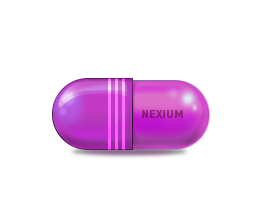
The antifungal agent which has activity against dermatophytes, yeasts, dimorphic fungi and eumycetes. It is also active against staphylococci and streptococci. The therapeutical indications of the drug include: mycoses of the gastrointestinal tract, eyes, genital organs, chronic recurrent vaginal candidiasis, dermatomycosis, onychomycosis, Candida, folliculitis, dermatophytosis, systemic fungal infections (blastomycosis, candidiasis, paracoccidioides, coccidioidomycosis, cryptococcosis, histoplasmosis, hromomikoz, sporotrichosis, paronychia, fungal sepsis, fungal pneumonia); leishmaniasis; tinea versicolor, prevention of fungal infections in patients with a high risk of their development. The mechanism of action is inhibition of fungal membrane ergosterol synthesis and the violation of the cell wall permeability.

An antimicrobial agent from the fluoroquinolone group. It has a broad spectrum of antibacterial action. The therapeutical indications include bacterial infection of the urinary tract (pyelonephritis, cystitis, urethritis), genitals (prostatitis, cervicitis, endometritis), gastrointestinal tract (salmonellosis, shigellosis), uncomplicated gonorrhea. Also used to prevent infections in patients with granulocytopenia, diarrhea of travelers.

A tricyclic antidepressant with a relatively short latency period. It has almost no sedative effect. therapeutical indications include: depressive phases of a manic-depressive psychosis, all other forms of endogenous depression (reactive and neurotic). In combination with amitriptyline it is used for depressions that occurred during treatment with reserpine. In combination with neuroleptics, it is used in the treatment of depression that developed during treatment of schizophrenic psychoses.

Olanzapine is an antipsychotic drug (neuroleptic). It is shown in schizophrenia in adults, psychotic disorders, bipolar affective disorder in adults, depressive states.

An antispasmodic drug, which removes pain and reduces the tone of smooth muscles: gastrointestinal tract, biliary tract, uterus, it also relaxes the detrusor (direct antispasmodic and m-anticholinergic effect). Increases bladder capacity, reduces the frequency of detrusor contractions, hinders urination. Well tolerated when appointed for a long term. Used in neurogenic bladder (including detrusor hyperreflexia, multiple sclerosis or spina bifida), urinary incontinence (of idiopathic origin), nocturnal enuresis (in children older than 5 years).
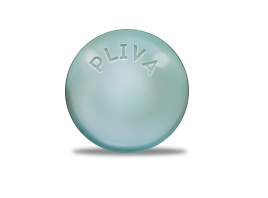
Pamelor is a tricyclic antidepressant (TCA, tricyclic antidepressants) of the second generation. It is used in the treatment of some major depressive disorder and nocturnal enuresis (bedwetting) in children. In addition, the drug is sometimes used for the treatment of chronic diseases such as chronic fatigue syndrome, chronic pain and migraine, and the lability in certain neurological diseases.

The drug dilates coronary vessels (mostly arterioles) and causes a significant increase in volumetric blood flow velocity. Increases the content of oxygen in venous blood of coronary sinus and its absorption by myocardium. Promotes the development of collateral coronary circulation, reduction in a systemic vascular resistance, improves microcirculation, has angioprotective action.
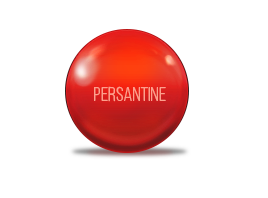
Phenergan is an antiallergic, topical anesthetic, antihistamine, antipruritic, antiemetic, hypnotic, sedative on the basis of Prometnazine.
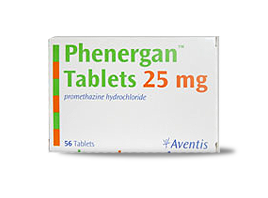
Plavix is an antiplatelet drug; specific and active inhibitor of platelet aggregation; has a coronary-dilating effect. The use of Plavix is indicated for the prevention of atherothrombotic complications in adult patients with myocardial infarction in adult patients with an acute coronary syndrome. The drug is also indicated to prevent atherothrombotic and thromboembolic complications, including a stroke, atrial fibrillation in patients with atrial fibrillation, who have at least one risk factor for vascular complications and who cannot take indirect anticoagulants and have a low risk of bleeding.

Blocks the final stage of HCl secretion, reducing basal and stimulated secretion, regardless of the nature of the stimulus. Prescribed for gastric ulcer and duodenal ulcer in acute phase, erosive-ulcerative esophagitis, reflux esophagitis, Zollinger-Ellison syndrome, stress ulcers of the gastrointestinal tract; eradication of Helicobacter pylori within a combination therapy, non-ulcer dyspepsia.

The drug is a prodrug and is activated in the acidic environment of the secretory tubules in the parietal cells. It reduces basal and stimulated secretion regardless of the nature of the stimulus. Prescribed in case of erosive ulcerative diseases of the gastrointestinal tract and eradication of Helicobacter pylori in infected patients with gastric and duodenal ulcer.
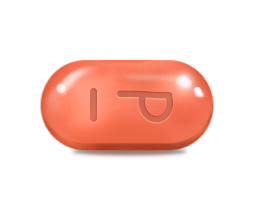
Promethazine reduces the permeability of capillaries, swelling of the mucous membranes, itching. Has adrenolytic, moderate peripheral and central cholinolytic action. Inhibits histamine-N-methyltransferase, blocks central histamine H3 receptors. Oppresses the central nervous system, has a sedative, anxiolytic, antipsychotic and hypnotic effect, lowers body temperature. Reduces the excitability of the vestibular receptors, eliminates dizziness. Has antiemetic effect.

An inhibitor of proton pump. The drug indications include: gastric ulcer and duodenal ulcer (in an acute phase), erosive gastritis, reflux-esophagit, Zolling-Erellison syndrome.
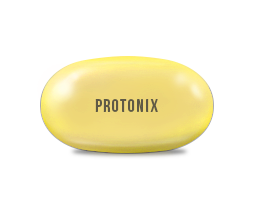
Antidepressant. Strengthens the central adrenergic and serotonergic transfer. Used for the treatment of depressions including anhedonia, psychomotor retardation, insomnia, early awakening, weight loss, loss of interest in life, suicidal thoughts and mood swings.

An antimicrobial bactericide - synthetic derivative of nitroimidazole. Used in urethritis, vaginitis, intestinal amoebiasis, liver amoebiasis, giardiasis.

Septra - Sulfamethoxazole is an antibiotic that treats various types of infections caused by bacteria. The combination of sulfamethoxazole and trimethoprim is used to treat ear infection, urinary tract infection, prostate infection, bronchitis, travelers' diarrhea and pneumocystis pneumonia. The drug is available in the form of tablets, as well as in liquid form.

Seroquel - treats acute and chronic psychoses, including schizophrenia. The drug is also prescribed to patients with manic episodes associated with bipolar disorders.

Tegretol - anticonvulsant drug, dibenzodiazepine derivative. It also has neurotropic and psychotropic action. Indications for use: epilepsy, alcohol withdrawal syndrome, idiopathic trigeminal neuralgia and trigeminal neuralgia with multiple sclerosis (typical and atypical), idiopathic neuralgia of the glossopharyngeal nerve, diabetic neuropathy with pain syndrome, diabetes insipidus of central genesis,

is given to patients for treating severe acne that do not respond to other medicines
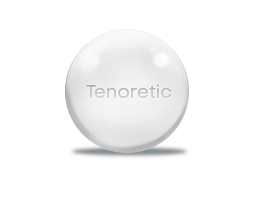
Thorazine - the product of GlaxoSmithKline and Zuellig Pharma, based on the Chlorpromazine, the substance which belongs to a neuroleptic group of aliphatic derivatives of phenothiazine. It has a pronounced antipsychotic effect, eliminates psychomotor agitation, reduces fear, aggressiveness, psychomotor inhibition. In addition to neuroleptic and sedative, it has antiemetic, hypothermic, antihypertensive, antihistamine and antiserotonin effect. It blocks central adrenergic and dopaminergic interneural contacts. Potentsiruet action of analgesics, local anesthetics, hypnotics and anticonvulsants.

Tinidazole - an antibacterial agent for systemic intake, used for the treatment of diseases such as trichomoniasis, giardiasis, amoeba dysentery, anaerobic infection, mixed aerobic-anaerobic infections (in combination with appropriate antibiotics), prevention of postoperative anaerobic infections.

Trazodone is an antidepressant, a thiazolopyridine derivative. It also has a timoleptic, anxiolytic, sedative and miorelaxing action. Has a high affinity for some subtypes of serotonin receptors, inhibits the reuptake of serotonin; The neuronal capture of norepinephrine and dopamine affects little.

Trileptal is used to treat simple and complex forms of partial epileptic seizures that have secondary generalization (possibly without it) beginning at the age of one month; generalized tonic-clonic forms of epileptic seizures in patients from two years of age. Reviews about Trileptal have a positive connotation, which allows to determine its effectiveness in use, thanks to patients who have experience of taking the drug.
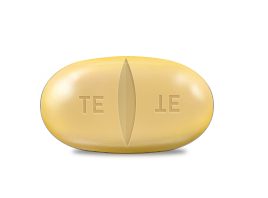
Uroxatral - Alfuzosinis an active substance, as an antagonist of the α1 adenogenetic receptor, this drug relaxes the muscles of the prostate and the bladder. Used in the treatment of benign prostatic hyperplasia (BPH). Reduces pressure in the urethra and reduces resistance to urine flow, eases urination and eliminates dysuria.
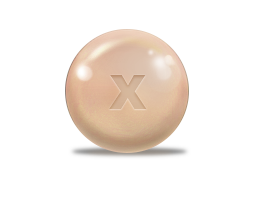
Vasotec- an antihypertensive drug based on the action of the active ingredient Enalapril, whose mechanism of action is associated with inhibition of the activity of the angiotensin-converting enzyme, leading to a decrease in the formation of the vasoconstrictor factor - angiotensin II and simultaneously to the activation of the formation of kinin and prostacyclin possessing a vasodilating action.
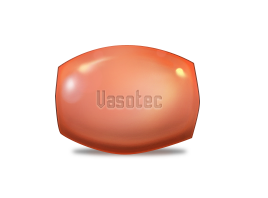
Vermox - anthelminthic drug of a wide spectrum of action. The most effective for Enterobius vermicularis, Trichuris trichiura, Ascaris lumbricoides, Ancylostoma duodenale, Necator americanus, Strongyloides stercoralis, Taenia solium, Echinococcus granulosus, Echinococcus multilocularis, Trichinella spiralis, Trichinella nativa, Trichinella nelsoni.
Causing an irreversible violation of glucose utilization, depletes glycogen stores in helminth tissues, interferes with the synthesis of cellular tubulin, and also inhibits the synthesis of ATP.

Zantac - ranitidin - the drug is intended for the treatment of duodenal ulcers, benign gastric ulcer, postoperative ulcer, reflux esophagitis, Zollinger-Ellison syndrome, epigastric or chest pain. The administration of ranitidine is indicated in cases where a decrease in gastric secretion and a decrease in the production of hydrochloric acid is desirable, for the prevention of gastrointestinal bleeding, for the prevention of recurrence of bleeding in patients with bleeding ulcers of the stomach and duodenum, before general anesthesia in patients with a presumed risk of aspiration of acidic stomach contents (Mendelssohn syndrome), especially in women during childbirth delivery clashes.

Zebeta is a beta-blocker that affects the heart and blood flow. The drug is used to treat hypertension (high blood pressure)

Zestoretic - tablets containing 12,5Mg of Hydrochlorothiazide and 10Mg of Lisinopril, as active ingredients. It is hypotensive, vasodilating, natriuretic, cardioprotective medical preparation.The drug is used to treat arterial hypertension, also in order to reduce the risk of cardiovascular disease and mortality in patients with hypertension and left ventricular hypertrophy, manifesting cumulative reduction in the incidence of cardiovascular death, incidence of stroke and myocardial infarction.

Zithromax - antibiotic of a wide spectrum of action. Antibiotic-azalide, a representative of a new subgroup of macrolide antibiotics. In the focus of inflammation it has a bactericidal effect. For the active ingredient of Zithromax, Azithromycin, all the gram-positive cocci (except those bacteria which are resistant to erythromycin) are susceptible.

Zoloft is an antidepresant stopping the reuptake of serotonin, which is performed by the neurons that isolated it. As a result, the concentration of the neurotransmitter increases in the synaptic cleft and the main cause of depressive states, the serotonin deficiency, is eliminated.

is given to patients for treating severe acne that do not respond to other medicines








